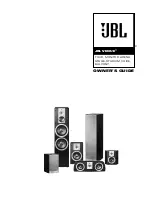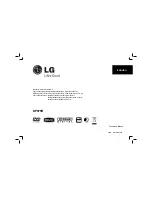
Page 4
For technical questions, please call 1-888-866-5797.
ITEM 69674
Sa
Fety
Setup
Opera
ti
O
n
Maintenance
16. Connect the Generator only to a load or
electrical system (120 volt or 240 volt) that is
compatible with the electrical characteristics
and rated capacities of the Generator.
17. Insulate all connections and disconnected wires.
18. Guard against electric shock. Prevent body
contact with grounded surfaces such as
pipes, radiators, ranges, and refrigerators.
19. Only use a suitable means of transport and
lifting devices with sufficient weight bearing
capacity when transporting the generator.
20. Secure the Generator on transport vehicles to
prevent the tool from rolling, slipping, and tilting.
21. Industrial applications must follow
OSHA requirements.
22. Do not leave the Generator unattended when it is
running. Turn off the Generator (and remove safety
keys, if available) before leaving the work area.
23. The Generator engine can produce high noise
levels. Prolonged exposure to noise levels
above 85 dBA is hazardous to hearing. Always
wear ear protection when operating or working
around the gas engine while it is operating.
24. Wear ANSI‑approved safety glasses,
hearing protection, and NIOSH‑approved
dust mask/respirator during use.
25. People with pacemakers should consult their
physician(s) before use. Electromagnetic fields
in close proximity to a heart pacemaker could
cause pacemaker interference or pacemaker
failure. Caution is necessary when near
the engine’s magneto or recoil starter.
26. Use only accessories that are recommended
by Harbor Freight Tools for your model.
Accessories that may be suitable for one
piece of equipment may become hazardous
when used on another piece of equipment.
27. Do not operate in explosive atmospheres,
such as in the presence of flammable
liquids, gases, or dust. Gasoline‑powered
engines may ignite the dust or fumes.
28. Keep grounded conductive objects, such as
tools, away from exposed, live electrical parts
and connections to avoid sparking or arcing.
These events could ignite fumes or vapors.
29. Stay alert, watch what you are doing and
use common sense when operating this
piece of equipment. Do not use this piece
of equipment while tired or under the
influence of drugs, alcohol or medication.
30. Dress properly. Do not wear loose clothing or
jewelry. Keep hair, clothing and gloves away
from moving parts. Loose clothes, jewelry or
long hair can be caught in moving parts.
31. Parts, especially exhaust system components,
get very hot during use. Stay clear of hot parts.
32. Do not cover the generator or its
engine during operation.
33. Keep the generator, its engine, and
surrounding area clean at all times.
34. Use the generator, accessories, etc., in accordance
with these instructions and in the manner
intended for the particular type of equipment,
taking into account the working conditions
and the work to be performed. Use of the
equipment for operations different from those
intended could result in a hazardous situation.
35. Do not operate the generator with known
leaks in the engine’s fuel system.
36. WARNING: This product contains or, when
used, produces a chemical known to the State
of California to cause cancer and birth defects
or other reproductive harm. (California Health
& Safety Code § 25249.5,
et seq.
)
37. When spills of fuel or oil occur, they must be
cleaned up immediately. Dispose of fluids and
cleaning materials as per any local, state, or
federal codes and regulations. Store oil rags in
a bottom‑ventilated, covered, metal container.
38. Keep hands and feet away from moving parts. Do
not reach over or across generator while operating.
39. Before use, check for misalignment or binding
of moving parts, breakage of parts, and any
other condition that may affect the generator’s
operation.
if damaged, have the generator
serviced before using.
Many accidents are
caused by poorly maintained equipment.
40. Use the correct generator for the application.
Do not modify the generator or its engine,
and do not use the generator for a
purpose for which it is not intended.
Operating precautions (cont.)





































